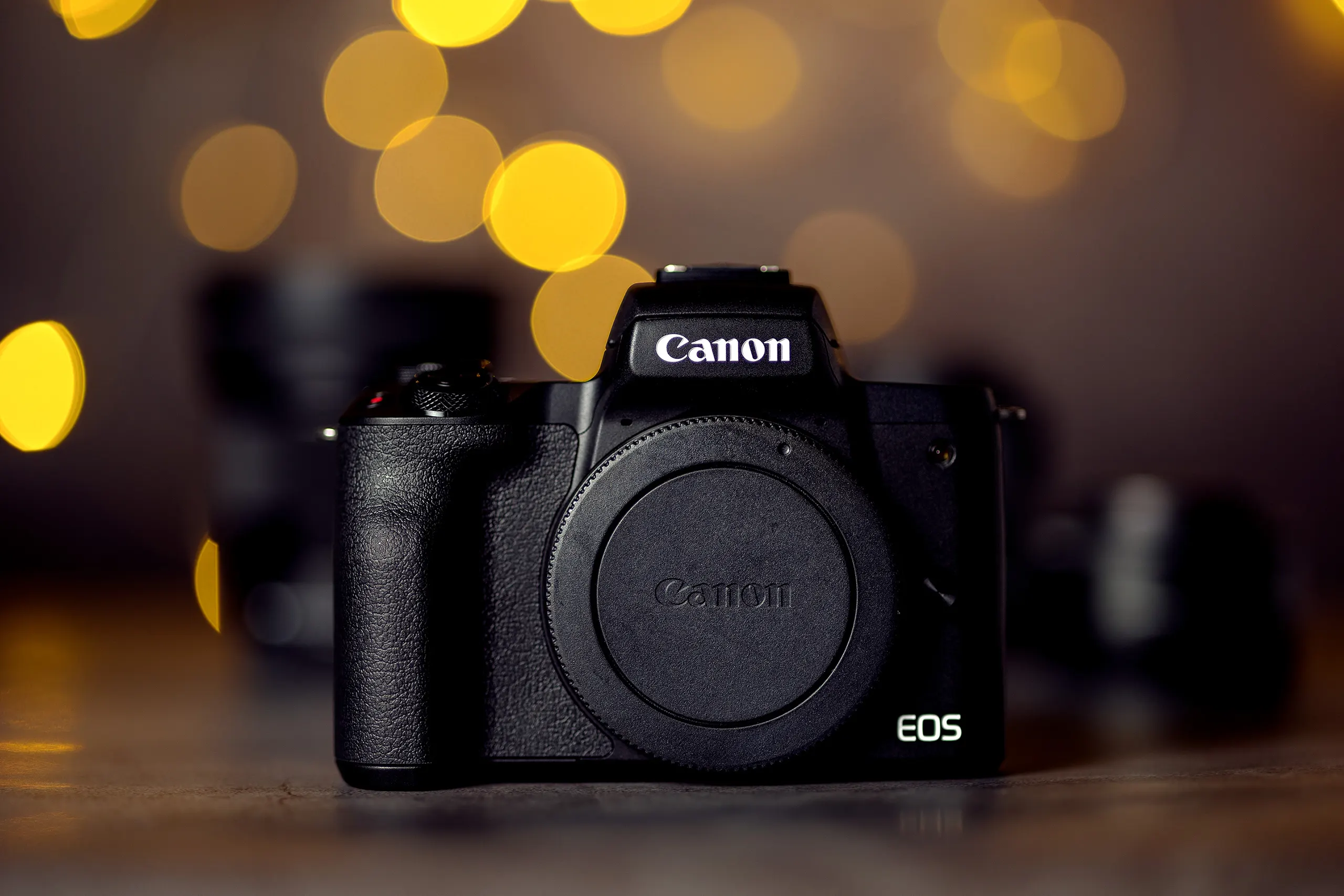Welcome to my review of the Canon EOS M50 Mark II. To start things off, I’ve been using the M mount for many years now. I started with an M3, sold that and upgraded to the M5 and have now made the switch to the M50 Mark II. With it’s staggered release the M50 Mark II might not have got as much attention as it deserved. If you’re in the market to buy one, hopefully this review can help you some.
As always I purchased all this equipment with my own money and this review is not sponsored in any way. If you prefer to listen rather than read, the audio version of my review is right below.
A Luke Warm Response
When I was looking to purchase the M50 Mark II I was searching for reviews of this camera and I was surprised to see what I found. The majority reviews I seen were less than favourable and this was for a quite valid reason, the lack of upgrades over its predecessor. If you compare the specs of both cameras, the main differences are:
- Eye AF in Servo
- Slightly lighter weight
- Better battery life
- Vertical video
A more frequent comment you’ll see is that this should simply be a firmware update and not a new camera. I don’t have the technical knowledge to say if this is in fact possible but considering they have the exact same processor and sensor, I would say it is. At the time of writing, the original M50 kit goes for $797 on sale and I purchased the Mark II for $855. Although it may not be a large upgrade, at least it isn’t a massive price jump between models.
One thing to keep in mind is with the Rebel series DSLR’s there wouldn’t be much reason to upgrade from one model to another. People would generally buy something like a 750D then either let it sit in their cupboard to never be used again or move up to a higher model. I personally see it as being the same situation here and this is more designed for a new owner and not someone looking to upgrade.
A Worthy Upgrade For Some
Depending on which (if any) body you currently have, this could either be a great upgrade or something not worth the hassle. If you currently own the original M50 and are happy with it, then you’d be likely better off spending your money on new lenses unless you can sell your body for a really good amount. In saying that, having Eye AF in Servo to me is a feature alone worth the upgrade but this may not be the same for all people.

If you currently use an M5 (like I did), M6 or even something older, this is actually a really tempting upgrade. When I originally got my M5 at launch, I felt like it was all I needed. At the time I currently had an EOS 6D and although it was a great camera IQ wise, the autofocus left a lot to be desired. Because of this, I actually enjoyed the AF of the M5 much more and felt it was so much more advanced. Fast forward about 4 years and I have become used to the much faster phase detect AF of both the Sony A7 III and Canon EOS R6 so the M5 was less of a pleasure to use.
Being that the R6 is my main camera and I generally do prefer Full Frame bodies, I felt I didn’t want to spend so much on buying a M6 Mark II. At the same time I wanted something that had more advanced autofocus that wouldn’t feel so different to my R6. With a little research and the fact it could now do Eye AF in Servo, the M50 Mark II had really caught my eye and won my heart over.
Still an Amazing and Capable Camera
When I first held the Canon EOS M50 Mark II and compared it to my M5, it felt like a bit of a mix. In some ways it felt more plastic but in other ways more solid. I love the fully articulating screen and the texture on the back of it. The camera itself doesn’t feel too small or flimsy, although not as solid as the M5 at the same time. I also miss the extra dials but considering how responsive the touch screen is, you can easily change settings that way just as quick. The only downside to doing this is you can’t adjust them while holding the camera up to your face still like you can with dials.

In terms of autofocus, I personally feel it’s night and day compared to my M5. I generally shoot in servo the majority of the time so having good tracking performance is a must for me these days. Many people prefer one shot if their subject isn’t moving but there’s one thing to keep in mind. Even if your subject is static, you may move slightly if shooting handheld which is where Servo will help ensure you hit focus each time.
I find tracking on the M50 Mark II to perform really well and although it may not be quite at the same level as my R6, I don’t feel limited or held back when using it. I’ve found if you focus on a subject, it will track that subject really well and only really loses focus if something comes in front of the subject. I haven’t used and M6 Mark II before so I would assume it performs as well or better but at almost double the price.

In terms of Image Quality and Dynamic Range the M50 isn’t bad but also isn’t anything that would blows you away. If you were to look at the RAW files this 24 Megapixel sensor produces, it would be fair to assume it’s the same one that has been used in previous M series bodies. The newer Digic 8 processor compared to the one in older bodies like an M5 or M3 likely handles high ISO noise reduction better but mainly in JPEG.
Although the sensor isn’t anything new or special, I have had no issues when editing the files. There are several images here that I’ve exposed to protect the highlights then pulled back detail later in post without any issues. I’ve really enjoyed using this camera and at times I wonder if I could survive with just this body. It’s usually when I shoot at higher ISO’s that I’m really reminded why I love full frame bodies. Although it’s nowhere near being bad, I do notice some noise at ISO 800 whereas on my Full Frame Canon EOS R6 it is still super clean.

I find I can balance the use of these two bodies quite easily though. Considering the size and weight of both the body and EF-M lenses, this is the type of body you can carry with you everywhere. I’ve got a small Lowerpro camera sleeve and I just chuck this in my backpack each time I go out now so I always have something with me. The fully articulating screen is a big plus for me too and I really like the texture on it the rear of it as well. It is a lower resolution compared to the M5 but as I primarily use the EVF this doesn’t bother me too much.
In terms of what lenses I use with the body, it’s been the following:
- Canon EF-M 22mm f/2 STM
- Canon EF-M 32mm f/1.4 STM
- Sigma 56mm f/1.4 DC DN
Any Canon M mount body and the 22mm f/2 make a great pocketable combo but I’ve found myself using the 32mm and 56mm more. The autofocus speed and accuracy as mentioned above along with these amazing lenses has made this body a true pleasure to use.
What I Don’t Like About the M50 Mark II
There aren’t too many things I don’t like about the Canon EOS M50 Mark II and many of them I consider to be more nitpicks and not actual major issues. In saying that, there is one big exclusion which is In Body Image Stabilization (IBIS) which would be amazing to have but I’m sure it would also drive up the price quite a bit.
One thing I forgot to mention in the audio review that’s also a disappointment is the lack of a proper silent shutter. On the M50 Mark II if you wish to use the electronic shutter, you must shoot in silent mode which only allows auto and not manual controls. As someone who pretty much only shoots in either Electronic First Curtain Shutter (EFCS) or full Electronic Shutter (ES), this is probably more disappointing than the lack of IBIS.

The last few I’ll mention aren’t really major items and are dependent on the person themselves. The first of these is the lack of extra dials compared to something like the M5. Although changing settings is honestly really fast and easy using the touch screen, having at least one extra dial would really help if you want to change settings while holding the camera up to your head.
The other small disappointment was the lack of hotshoe cover. For both my M3 and M5 a small plastic hotshoe cover was included which I feel was a nice touch. They are obviously dirt cheap to make and wouldn’t cost Canon much to include this again. I also got quite a big surprise when my IR remote I’ve used with every single body didn’t work. For the M50 Mark II, you need to get a Bluetooth remote like the Canon BR-E1 which I have to admit works much better compared to the IR one but is also more costly.
The final ones I’ll mention are something Canon could (likely I’m guessing) easily fix with a firmware update which is auto rotating images and a bulb timer. The auto rotate feature was actually in the M5 and something I got used to when using Sony. The bulb timer is a strange exclusion but I’m guessing that Canon likely thought the target market for this camera wouldn’t be doing long exposures.
Below are a collection of images I’ve taken with this camera.
















Summary
The EOS M50 Mark II is a great camera that is a big step up in terms of autofocus, especially if you have an older M mount body or are looking for a small second camera to carry around with you. Although it does have some exclusions that still photographers value like IBIS or a proper silent shutter, it’s still great value for the money and something I would recommend.
What I like
- Autofocus
- Price
- Fully articling screen
What I don’t Like
- Lack of IBIS and proper electronic shutter
- Small exclusions like bulb timer, auto rotate when viewing images and hotshoe cover
Build
Image Quality
Autofocus
Price
If you enjoyed this review, please consider subscribing below to be notified of new posts by email.



Nice review! As for EOS-M series being popular in Japan that you mentioned in the podcast, I guess that’s because they have a huge market for lady photographers (called カメラ女子 [camera joshi]). For the same reason, Olympus PEN series are very popular there. Unlikely that Canon ditches EOS-M series for this reason!
Thanks for the comment Joey! I certainly hope they do take all the カメラ女子 into consideration and keeping making them as I really enjoy using these cameras ?
This is a great review from a photographer’s point of view. I’m a content creator and would like to have more about the clean HDMI output features. One of the main reasons I want to upgrade from the Mark I to the Mark II.
Hi Steve, thanks for the comment and sorry for the late reply! Sorry but I don’t do any video so have no clue about that particular feature.
You can use bulb on this camera ! In manual mode adjust shutter speed downwards until you reach bulb. If you don’t have a remote release available activate the touch shutter and gently tap the LCD to start the exposure and very gently tap again to end the exposure.
Hi Les, thanks for the comment!
Good to know although I don’t own this body any more so won’t be able to give it a try. I actually purchased the Canon BR-E1 Bluetooth remote for it and my R6 which was well worth the money. The range is much better compared to IR remotes
Wow best review so far on the M50 Mark II. I really want the silent shutter as I work on film set, but if this will not allow me to adjust manually is it really worth it?
Thank you I appreciate it and glad you enjoyed it. I believe the silent mode is auto only so kind of useless. If silent mode is important for you, I don’t believe any of the EF-M bodies are able to work like the R5/R6.